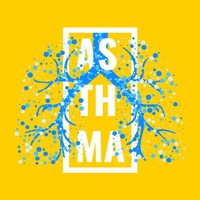
Individuals with hay fever (seasonal allergic rhinitis (SAR)) are at higher risk of thunderstorm asthma (TA), which is now recognised as an environmental health emergency. A new study indicates that in individuals with SAR, clinical tests can identify the risk of a history of TA and be used to inform patient-specific treatment recommendations (1).
Thunderstorm asthma refers to allergic asthma exacerbations that occur in the hours after a thunderstorm, especially storms occurring during pollen seasons. TA is thought to be triggered by the combination of wind, humidity, and lightning, which ruptures grass pollen and mould spores and breaks them into aerosolised particles (2).
Typically, intact pollen grains (35-40 µm diameter) are too large to penetrate the lower airways, where inflammation commonly occurs in asthma (3). However, these pollen grains can rupture in the atmosphere when exposed to rainfall, high humidity, wind, and lightning activity, causing them to release extremely fine particles (≤2.5 µm diameter) that can penetrate further into the lower airways compared with intact pollen (4,5,6). Each ruptured pollen grain releases hundreds of starch granules containing allergens that can induce asthma symptoms in susceptible individuals and respiratory distress in individuals with no history of diagnosed asthma (6,7).
Symptoms of TA include acute onset coughing, shortness of breath, wheezing, and respiratory distress within 20 – 30 minutes of a storm (8). These symptoms occur due to an early allergic asthmatic response, where pollen particles initiate mast cell degranulation and bronchoconstriction. Mast cells release histamine and other inflammatory mediators that cause airway smooth muscle contraction, mucosal oedema, and mucous production (9). The early asthmatic response is followed by an inflammatory phase, where an influx of inflammatory cells, including eosinophils, perpetuate bronchoconstriction, airway narrowing and inflammation (7,10,11). Although inhaled bronchodilators are often effective, hypoxia and respiratory failure can occur, with death a possible complication (2).
TA epidemics have been reported worldwide. Most frequently, however, events have occurred in south-eastern Australia, during spring (12). Rye grass pollen is the primary trigger of all Australian events (13). However, fungal spores and other types of pollen have been implicated in events in the UK, Canada, and Italy (14,15,16,17,18).
Previous studies of Australian TA epidemics indicate that symptomatic hay fever (SAR) and the presence of allergen-specific IgE to ryegrass pollen (RGP-spIgE) are almost universal in those who suffer from TA (12). Other risk factors include:
- exposure to the outdoor environment at the time of the storm
- age (20 -50 years) (comparable to the age distribution of allergic rhinitis)
- male sex
- Asian or Indian ethnicity
- poor adherence to inhaled corticosteroid (ICS) preventer
- hospital admission for asthma in the previous year (8,19,20,21).
The current multicentre study recruited 228 adults from Melbourne who reported SAR and compared clinical features and biomarkers for those who did not report any TA (35%) with those who suffered prior TA symptoms (37%) and those reporting previous hospital presentation with TA (28%). Biomarkers included blood eosinophil counts, spirometry (FEV1), exhaled nitric oxide and RGP-spIgE.
The study found that raised eosinophil levels, elevated RGP-spIgE concentration, and lower lung function in people with SAR during high pollen season were associated with a history of TA and hospital presentation. In addition, higher levels of exhaled nitric oxide also increased the risk of TA.
Logistic regression analysis of the individual clinical parameters was undertaken to establish thresholds for TA risk. The results indicated an RGP-spIgE concentration higher than 10.1kU/L, prebronchodilator FEV1 per cent predicted value less than 90%, and an Asthma Control Questionnaire (ACQ) score higher than 1.5 identified individuals at increased risk of hospital presentation for TA. Importantly, rhinitis severity (measured by Sino-Nasal Outcome Test (SNOT)-22 score) was not associated with a history of TA.
Epidemic TA events are predicted to increase in frequency and severity as climate change increases erratic weather patterns such as thunderstorms, and wet and dry seasons increase pollen production and other aeroallergen concentrations, posing challenges for the health of at-risk populations (22,23). Furthermore, given the increasing prevalence of allergic disease (24,25), identifying susceptible patients and preventing poor outcomes is a crucial research and public health policy priority.
The current study is the first to demonstrate biomarkers for TA risk that can be used to guide clinical decisions to implement preventative strategies. These strategies may include patient education around symptom surveillance, trigger identification and exposure reduction, allergy immunotherapy, and corticosteroid medication. Furthermore, staying indoors, using air purifiers, or wearing masks prior to and during thunderstorms can reduce individual risk when allergen levels are high.






